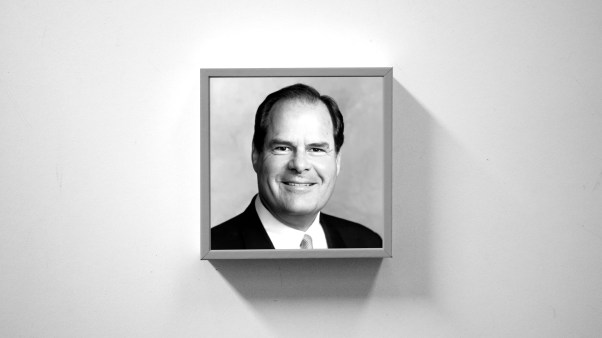Is home schooling making the grade?
In 1983, when CHRISTIANITY TODAY first reported on home schooling (“Schooling at Mother’s Knee: Can It Compete?”; Sept. 2, 1983), it was a little-known practice. Now, five years later, questions about its value are being met by a growing body of research and observation, the findings of which are surprising many of home schooling’s earlier critics.CTasked researcher Brian Ray to review the current data and update readers on the state of “kitchen classrooms.”
Home schooling may be the fastest-growing form of education in America today. Though estimates of the number of children involved vary widely—from about 250,000, according to the Education Commission of the States, to as many as one million, according to an article in the Wall Street Journal—the numbers are clearly on the rise. In one state (Colorado), the number of state-approved home schoolers increased from 54 during the 1980–81 school year to 835 during the 1987–88 school year, a 15-fold increase. “This is not an improbable estimate of the growth of the home-schooling movement in the nation,” reports the Hewitt Research Foundation, which is a major home-school support organization.
But with the growth of the home-school movement have come questions: Does home education prepare students as well academically as traditional systems? What about the social development of home-schooled children? Now, more than five years after the movement began to attract widespread attention, the questions are beginning to be answered. Research reports are stacking up, and so far the results they describe are impressive.
Several studies that consider both the cognitive and affective aspects of home learning are now available. In a national report entitled Choices in Schools, Chronicle of Higher Education correspondent Jack McCurdy found that home-school children achieved “as well or better” than those in conventional schools. Selwyn Feinstein, a writer for the Wall Street Journal, found that home-school children in New York have been scoring above average on achievement tests.
Test Scores
In addition to these anecdotal reports, there is a growing amount of empirical data that is confirming general observations. In Tennessee, for example, home-school children in grades two, three, six, and eight must pass the same standardized tests that are required of public-school pupils. Test results show home schoolers outscored public schoolers in math and reading by 4 to 16 percentile points.
At the other end of the country, Oregon requires all home-school children to take standardized tests and report their scores once a year. There, too, home-school children have outperformed public-school students. Based on the scores reported by December 1986, 24 percent of the home-school children scored in the ninety-first to ninety-ninth percentile range, and 76 percent of them scored above the fiftieth percentile mark.
More elaborate studies have also been executed:
• The Washington State superintendent of public instruction evaluated the progress of children in Washington’s experimental home-schooling program. The scores on the Stanford Achievement Tests (SAT) were compared for children in a number of cities and communities across the state. The study concluded that the majority of children (kindergarten through eighth-grade level) in the “parent as tutor” program scored average or above average in reading, language, and math.
• Jon Wartes, head counselor at Bothell High School, a large public school near Seattle, has executed several extensive studies of hundreds of home-school youth in Washington. His findings, based on achievement-test scores, indicate once again that home-school children scored better than their peers across the nation. For example, 1987 SAT scores showed that home schoolers “scored at or above the 50th percentile” in 104 out of the 120 test cells. The median score for home schoolers was at the sixty-fifth percentile on national norms.
• The Alaska Department of Education administers to its far-flung population a Centralized Correspondence Study (CCS), a program that is essentially home schooling with supervision by state education personnel. From 1981 to 1985, fourth-and eighth-grade CCS reading and math scores on the Alaska Statewide Assessment test ranged from 5 percent to 16 percent higher than those of their Alaskan peers who were not home schooled. And in a comparison based on 1985 Science Research Associates (SRA) data, home-educated students in kindergarten through sixth grade scored at least 6 percentile points higher than conventionally schooled Alaskans in all academic areas of comparison; the majority of these were above the eightieth percentile of the SRA norm. Grades 7 to 11 CCS students were 2 to 27 percentiles higher than the norm in 17 areas and equal in 3 others; the majority of these were at or above the seventieth percentile of the SRA norm.
Though such data do indicate that the academic achievement of home schoolers is equal and in many cases superior to traditional students, questions about academic quality cannot yet be put to rest, however. The data available must be considered with caution for several reasons. So far, the majority of the achievement scores come from children under 12 years of age, who often develop skills and gain knowledge more quickly and easily than those of middle-school or high-school age. These studies also do not consider, for example, that some home-school children were at one time in conventional schools. Have their achievement scores improved or worsened since being home schooled? Comparative data are not yet widely available. Nonetheless, there is as yet no indication that children suffer academically in any way from home schooling.
Home School Revisited
Five years ago CHRISTIANITY TODAY visited the home school of Pete and Char Yarema (“A Morning in a Home School,” Sept. 2, 1983). The couple spoke enthusiastically about the academic and spiritual benefits their three grade-school children were experiencing. Today, as their oldest enters high school-level studies and their youngest enters adolescence, the Yaremas are even more enthusiastic about educating their own children.
They still get lots of questions about their kids: Do they really perform as well as other children academically? What about their social skills? Do they make friends? Or play sports? Or interact with people who hold different beliefs?
However, Pete and Char don’t mind the questions. After six years of home schooling, their children—Kathy, now 15, Molly, 14, and Jonathan, 11—defy many skeptics’ notions about home schoolers.
“The people who are now our greatest backers … were in many cases wary about home schooling—until they spent time around our kids,” says Char, who assumes most of the teaching responsibility. “They see the kids are very normal and mature for their age. My mother, brother, and uncles, none of whom is a Christian and all of whom are public school teachers, are now enthusiastic about what we’re doing. It’s people who really don’t know our children who still ask questions. You can’t argue with results.”
Friends and flexibility
Kathy, Molly, and Jonathan have all made friends in the neighborhood, in church youth groups, handbell choirs, community sports teams, and bike mechanics and craft classes. And though friends and relatives expressed initial concern that much of the children’s day-to-day contact would be with older people—grandparents, women whose children they baby-sit, piano and art teachers who supplement their education—the Yarema kids see their social life as well rounded.
“People often seem to think that since I’m 15, the only people I can socialize with are high schoolers,” says Kathy. “I find that limiting. I know 27-year-olds, and they don’t just socialize with people in their twenties. They socialize with everybody. Home schooling has given us the flexibility to spend time with younger and older people, and I think that has better prepared me for dealing with people of all ages after I graduate from high school.”
As the children have grown older, Char has been able to build more and more flexibility into their schedules. On Tuesdays, for example, the Yarema children take turns spending time with their grandparents—not to take care of them, but to learn from them. During the past two years, Grandpa and Grandma have taught them to speak Polish, shown them how to change the oil in a car, and taught them about World War II from firsthand experience. On Wednesdays the girls leave home to baby-sit a set of triplets they have watched grow from five months to two-and-a-half years old.
“The child-development course I took in college could not compare to the hands-on training they’ve gotten,” says Char. “At one point Kathy and Molly were even keeping diaries to monitor the changes the babies were going through.” The children’s increased flexibility has given Char more freedom, too. “The biggest difference between home schooling now and when I started is that, though the material we’re covering is harder, the teaching is less intensive on my part,” she says. “The children have taken more initiative in their studies as they’ve grown older.”
“It was far more difficult as a young mom teaching several kids at home,” Char remembers. “Five years ago Jonathan was just learning to read, Molly was still getting her basics down, and Kathy didn’t know how to write a complete sentence. More than once I burst into tears, thinking, ‘Why did we think God was leading us to do this?’ But he was. And it was never so difficult that I seriously considered quitting.”
Has Char or Pete worried that one of the children may want or need to take a course they don’t feel qualified to teach? “The books we use present material so well that I wouldn’t be afraid of teaching anything,” says Pete. Char adds: “I’ve learned that it’s okay to run along with the kids sometimes. No teacher is required to know everything. There are a lot of great books, a lot of great libraries, and a lot of people, like the kids’ art and music teachers, who know more about certain subjects than we do.”
“Satellite school”
The Yaremas are held strictly accountable to Christian Liberty Academy, a private school that provides curriculum for approximately 22,000 home schoolers in more than 60 countries. As a “satellite school” of Christian Liberty Academy, the Yaremas are sent midterms, final exams, and report cards. Course loads are demanding. Kathy’s, for example, includes math, literature, history, economics, speech, Spanish, Bible, English, and six book reports from a suggested reading list composed largely of classics. Grading scales are tough: To get all As and Bs (which she does), Kathy must maintain at least an 87 percent average. The academy also requires students to take the standardized Iowa Basic Skills Test each year, on which the Yaremas, like many home schoolers, perform at least one and up to three grades higher than the national average.
Watching the children’s academic and social progress over the years, Char has found it easier to relax in her role as teacher. “Sometimes, like when I think about teaching two high schoolers next year for the first time, I still get nervous. But the longer we home school, the more confidence we have that it’s the right thing, and that God will continue to give us the grace to do it. Though every year is different,” Char says, “most of our biggest adjustments—learning that we had to say no more often to church and community commitments, getting used to having the children home all day—were made during the first year. If we hadn’t established good patterns then, we would never have made it this far.”
In search of school spirit
For Kathy, Molly, and Jonathan, too, school is even more enjoyable now than five years ago, given their growing freedom to integrate a variety of experiences into their education. They cite one-on-one teaching, not having to stay up late doing homework, and flexibility to meet different people and participate in different activities as the biggest current advantages of home schooling.
Do they miss social activities or school spirit? Kathy proudly models her Christian Liberty Academy jacket and answers no. In fact, she says, she has made friends among students from other satellite schools who gathered for an eighth-grade graduation ceremony at Christian Liberty last year.
Molly alone could come up with an emerging disadvantage: “Getting involved in a community sports league is not quite the same as getting involved in a school setting. One thing I miss is not participating in a gymnastics program.”
The Yaremas acknowledge that, while their home-school experience has been good, it may not be best for everyone. And they admit there are indeed limits to what they can accomplish.
“We cannot offer our children everything the public schools provide,” Char says. “They don’t have all the extracurriculars. But they have many advantages that kids in public schools don’t have, too. They haven’t wasted a lot of time in school wondering whether they should follow their parents and church or their peers. And somehow they are coming out normal, well educated, and, most important of all, strong Christians who know who they are.”
By Robert M. Kachur.
Social Concerns
There are also a number of questions about the social development of home-school children that have been frequently raised. Are not these children isolated from normal social contact by being schooled at home? How will they learn to get along with others? How will they learn to deal with other view-points?
Again, the available empirical data stack up in favor of home education.
• Wartes, in his extensive poll of Washington home-school students, also surveyed socialization. He found that 52.8 percent of the home-school children spent from 20 to more than 30 hours per month in organized community activities; 40 percent spent more than 30 hours per month with age-group peers outside the family; 68 percent spent 20 to more than 30 hours per month with children of other ages outside the family (some of the categories and times overlapped). Wartes concluded that home-school youth are not being socially deprived.
• Educator John Wesley Taylor attempted to address concerns about socialization by analyzing the relationship between home schooling and self-concept of children in grades 4 through 12. Taylor used self-concept as a measure because it is “closely linked with values, social competence, and self-evaluation,” and because of the importance of positive self-concept to effective learning. Taylor found (using scores on the Piers-Harris Self-Concept Scale) that the self-concept of home-school youth was significantly higher than that of conventional school youth. The home schoolers’ overall score was 34 percentile points higher than that of the conventional school youth. “Insofar as self-concept is a reflector of socialization,” Taylor wrote in conclusion, “the findings of this study would suggest that few home-schooling children are socially deprived.” And according to Taylor, his findings agree with the observations of others who have studied home-school families.
• Psychologist Mona Maarse Delahooke compared fairly equivalent groups of 32 private school and 28 home-school children of about nine years of age. She found no significant difference between the two groups in reading, arithmetic, or intelligence scores. Likewise, both groups scored in the “well adjusted” range of the Roberts Apperception Test for Children.
One difference, however, did surface in Delahooke’s study: Home-educated children appeared to be less peer oriented than those in schools. (Children from private schools exhibited a significantly greater focus on peers and nonfamily individuals.) This finding tends to confirm that home schooling may accomplish one additional purpose many Christian parents want it to; reduce the influence of peer pressure.
However, questions of socialization also have yet to be answered completely. Again, caution is in order when examining the results of these and other studies. Measuring social adjustment is far more difficult than judging academic achievement. Many argue about the validity of the types of psychological instruments used in the studies. And not all observers like what they see in home-school students.
“I hear consistently from our [Christian] school administrators that it is difficult to take in a home schooler,” says Paul Kienel, executive director of the Association of Christian Schools International. “He’s a misfit; he’s not in stride.”
Kienel suggests that home schools should consistently work with Christian schools on activities such as field trips and Christmas programs, in using curriculum materials, and by participating in achievement testing programs. Then, Kienel asserts, home-school youth will be better adjusted to the high school or college in which they may later enroll.
Unfair Comparison?
Based on almost all of the research findings to date, the report card on home schools reveals good marks in what may be the two most important single areas: academic achievement and socialization. But the overall grade is much harder to determine. Judging the effectiveness of home schooling by comparing its children with those in conventional education may be like mixing the proverbial apples and oranges.
Home-school parents, the large majority of whom appear to be evangelical Christians, obviously hold a special interest in their children’s development. They are willing to make great personal sacrifices for their children’s total growth and development—academic, social, and spiritual. Given the parental support and commitment they experience at home, it may be that these home-educated children would have done just as well, academically and socially, in conventional schools.
It may be that all of the measuring and evaluating of home-school achievement scores, self-concept ratings, and social adjustment categorizations is a moot exercise in terms of defending and promoting this mode of educating children. Perhaps what is needed, in addition to the other comparisons, is for researchers to question home-school parents carefully to find out more precisely what their objectives are for their children. They should then follow the youth over a long term to determine whether home schooling is actually effective in meeting the home schoolers’ goals.
Research data present only one or two aspects of Christian home schooling. The love, the complex parent-child and sibling relationships, and the subtleties of learning in a home environment are difficult to describe with numbers. Even qualitative researchers find it difficult to depict accurately the interaction in the home-school family. And when they do, they have only described a handful of the thousands of families partaking of it.
“I work with parents and children on things that can’t be measured clinically,” says Gregg Harris, author of The Christian Home School and a popular home-school seminar speaker. “We’re dealing with a sense of identity and destiny in God’s purpose. Whenever you hear the saying that ‘values are better caught than taught,’ you are considering the territory in which home schools excel.”
Nevertheless, critics want data. And data are rolling in. Of all the research to date, none casts serious doubt on the effectiveness of home schooling. Home-school youth are consistently doing as well as or better than their conventional school peers in both academic achievement and social development scores.
Brian Ray is assistant professor of eduction at Seattle Pacific University. He is the editor of the Home School Researcher, a quarterly journal.










